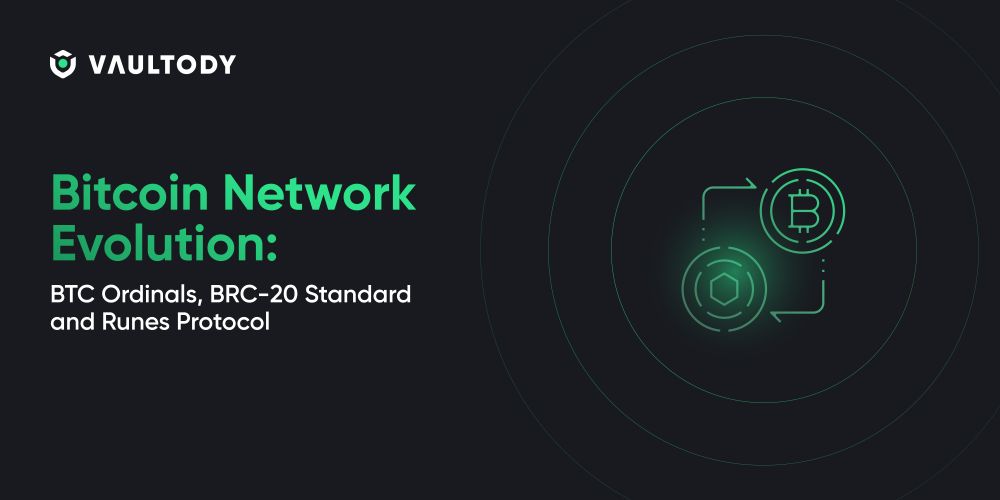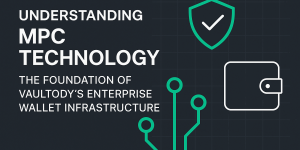Bitcoin Network Evolution: BTC Ordinals, BRC-20 Standard and Runes Protocol

In recent years, the Bitcoin network has witnessed a surge in improvements, introducing exciting updates that enhance its functionality. Among these innovations are Bitcoin ordinals, BRC-20 token standard and the upcoming Runes protocol which is set to launch in April 2024. But what are they and how do they affect the entire Bitcoin ecosystem? Let’s explore these questions below.
What Are Bitcoin Ordinals?
Bitcoin ordinals are very similar to NFTs (Non-Fungible Tokens), but with a unique twist. They are created using satoshis, the smallest units of Bitcoin. Each satoshi receives a serial number based on its order of mining. These serial numbers, known as ordinals, serve as a way to track individual satoshis and determine their ownership. But here’s where it gets interesting: ordinals can also be inscribed with additional content.
Inscribing Satoshis: The Power of Ordinals
The ordinals protocol enhances the Bitcoin network by allowing the creation of unique digital assets directly on the base Bitcoin blockchain. Unlike secondary layers, which rely on external solutions, ordinals operate within the core blockchain. By inscribing data onto satoshis - such as text, images, or metadata - Bitcoin ordinals transform these tiny units into scarce and valuable tokens.
Beyond Transactions: Expanding Use Cases
Ordinals extend Bitcoin’s use cases beyond simple transactions. They pave the way for:
- Digital Art: Artists can inscribe their creations directly onto the blockchain, ensuring authenticity and provenance.
- Collectibles: Rare and unique items, from virtual trading cards to limited-edition tokens, can be minted as ordinals.
- Unique Assets: Anything from concert tickets to real estate deeds can be represented as inscribed satoshis.
The Community Divide
While many users view ordinals as a promising network enhancement, the Bitcoin community remains divided. Some argue that ordinals carry the risk of UTXO (Unspent Transaction Output) proliferation, potentially clogging the network. However, proponents believe that the benefits of expanding Bitcoin’s capabilities far outweigh these concerns.
BRC-20 Token Standard: A Bridge Between Bitcoin and Tokenization
BRC-20 tokens represent an experimental standard within the Bitcoin network, aiming to expand its capabilities beyond simple peer-to-peer transactions. Introduced in March 2023 by an anonymous developer known as Domo, BRC-20 tokens address the increasing demand for tokenization on the Bitcoin platform.
The Essence of BRC-20 Tokens
At the heart of BRC-20 tokens lies the concept of ordinals. These ordinals uniquely label individual satoshis - the smallest units of Bitcoin - validating ownership and preventing duplication. Unlike Ethereum’s ERC-20 standard, which relies on smart contracts, BRC-20 tokens operate directly within the Bitcoin network. They leverage JSON ordinal inscriptions, made possible by the Bitcoin Taproot upgrade.
Ordinals and Their Role
- Unique Serial Numbers: Ordinals imprint a distinct serial number on each satoshi, allowing precise tracking and ownership verification.
- Emulating ERC-20: BRC-20 tokens aim to emulate Ethereum’s ERC-20 standard while remaining native to Bitcoin.
- Taproot Integration: By harnessing the power of Taproot, BRC-20 tokens enhance functionality and security.
Current State and Controversy
Despite their potential, BRC-20 tokens are still in their infancy. Their functionalities are currently limited to minting, deploying, and transferring tokens. However, they face similar controversy as ordinals - some argue that they could potentially clog the Bitcoin protocol.
In simple words, BRC-20 tokens serve as a bridge between Bitcoin’s robustness and the demand for tokenization. As they evolve, we can expect more exciting developments to be introduced to this new token standard.
Bitcoin Runes Protocol
The Runes protocol is anticipated to bring significant changes in the way of how fungible tokens are issued on the Bitcoin network. Designed for efficiency and simplicity, Runes aims to optimize the process of creating and managing tokens directly within the Bitcoin ecosystem. Here’s what you need to know:
Origins and Purpose
The inception of the Runes is coming from the advancements in Ordinal theory, which enabled users to generate unique serial numbers associated with individual satoshis and integrate file data into the blockchain. Conceived by Casey Rodamor, the visionary mind behind the Ordinals protocol, Runes emerges as a solution to the constraints encountered with the experimental BRC-20 token standard for fungible tokens on the Bitcoin network.
How Runes Will Function
Unlike traditional standards like BRC-20, Runes will adopt a UTXO (Unspent Transaction Output) based model. UTXOs represent the coins left in a wallet after completing a transaction. By inscribing metadata onto individual satoshis, Runes enhances efficiency while maintaining security and scalability. When a user receives Bitcoin, it arrives as UTXOs, which can be spent or combined to create new transactions. Runes protocol operates very efficiently in the context of UTXOs, ensuring optimal resource utilization.
What is the difference between Runes and BRC-20?
Below, we've outlined the key distinctions between Runes and BRC-20 in the table provided. This comparison highlights the significant changes set to be introduced with the anticipated launch of Runes in April 2024.
In conclusion, the Runes protocol signifies a notable step forward in augmenting tokenization capabilities within the Bitcoin ecosystem. With its increasing adoption, we anticipate a surge in innovative applications and compelling advancements on the horizon.




 Login
Login







 Copy link
Copy link